Gas Leak Detection in a Negative Pressure Environment
Negative pressure environment risk assessment
Leak detection in negative pressure areas
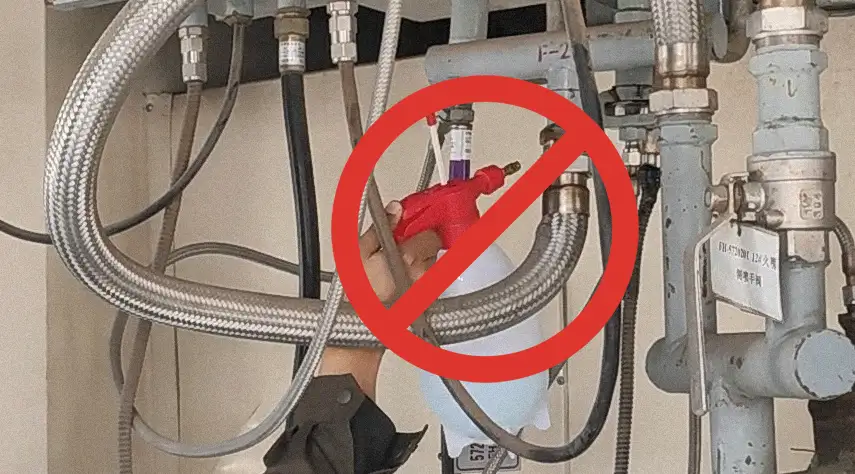
Outdated Methods Lack Accuracy & Efficiency
The gas concentration alarm relies on gas entering the device, which can be problematic in a negative pressure environment. This makes it challenging to detect negative pressure leaks using the soap bubble method. Additionally, infrared detectors can be influenced by temperature variations. As a result, these methods may fail to identify negative pressure leaks and can lead to inefficiencies.
Low efficiency, missed leaks
A large number of vacuum devices results in low efficiency and a high likelihood of missed leaks during manual maintenance.
Traditional methods are ineffective
Under negative pressure, the "soapy water method" for detecting vacuum leaks can only be carried out during a facility shutdown.
Difficulty detecting leaks in hazardous areas
During inspections of pipeline flanges at high altitudes and extreme temperatures, personnel may encounter significant risks, including falls from heights, burns, and frostbite.
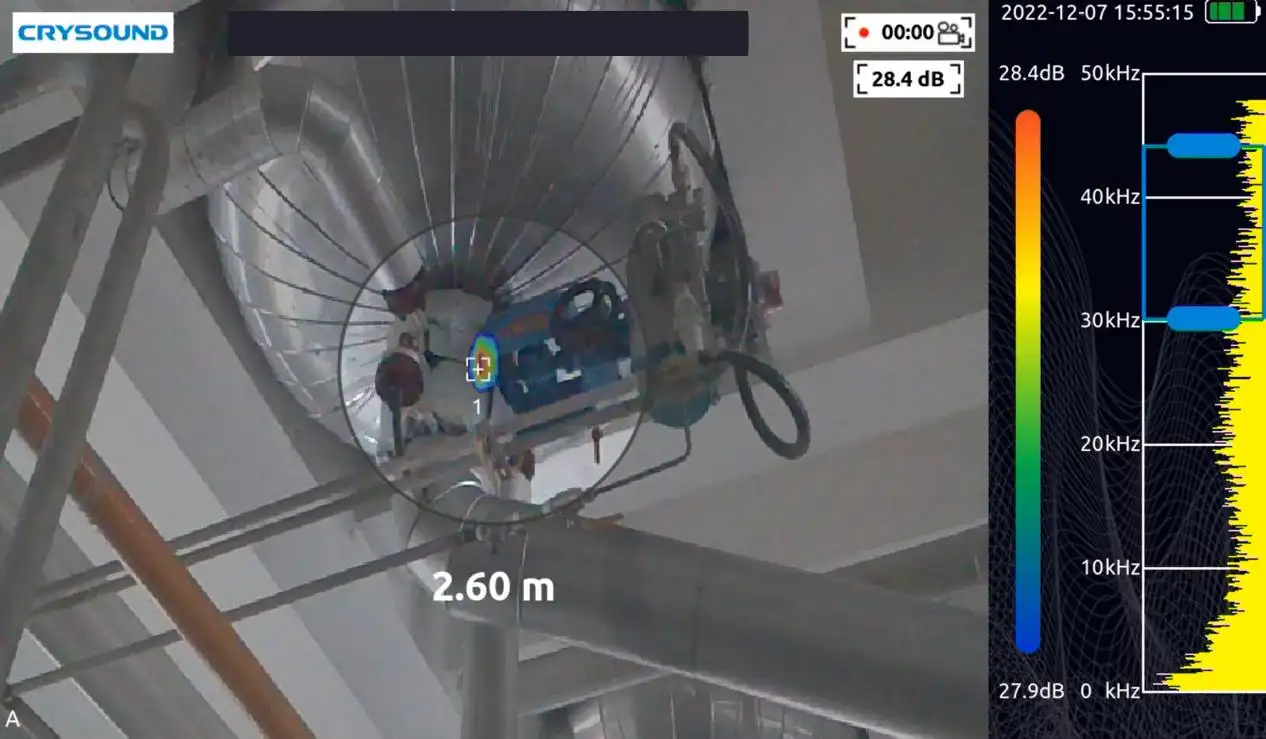
Use Case: Unlocatable Vacuum Leaks
As an example, a chemical company has struggled for an extended period to achieve the necessary vacuum level, impacting its production capacity. The factory’s current detection methods are inadequate, requiring the system to be filled with nitrogen to increase pressure before using soapy water to identify leaks. This approach is both time-consuming and labor-intensive, leading to substantial financial losses.
Quickly locate vacuum leaks in minutes
After the onsite technicians conducted an inspection using the acoustic camera, they were able to locate a critical vacuum leak position within minutes.
Reduced unnecessary downtime
Inspection teams efficiently covered large areas in a short time, minimizing both planned and unplanned downtime and reducing overall shutdowns.

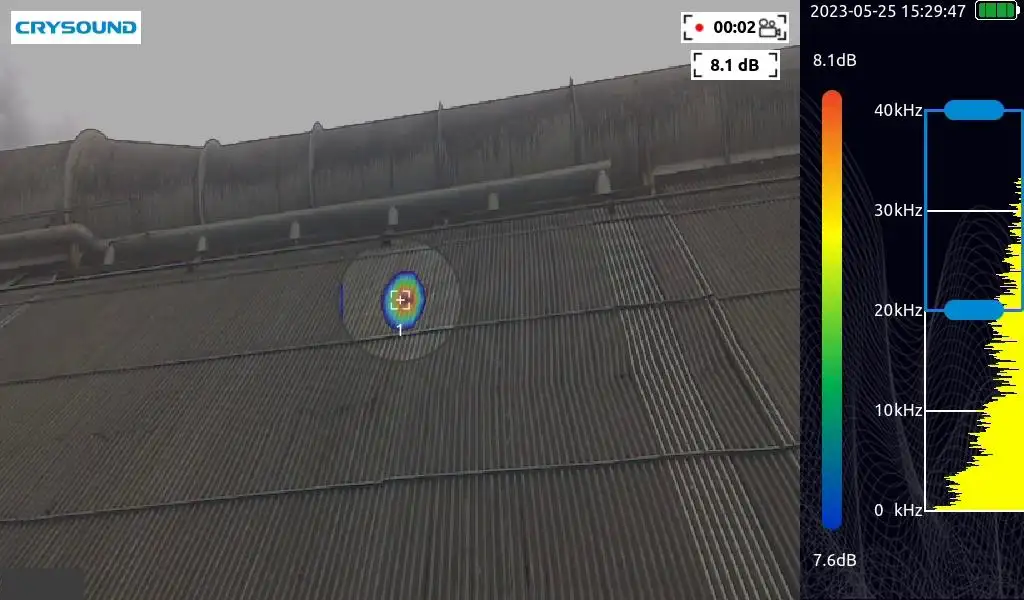
Use Case: Minimizing Safety Risks
As an example, a coal chemical company’s air-cooling pipeline carries high-temperature gas (70°C) under negative pressure. The thin pipe walls and aging equipment make it prone to leaks. While personnel using ultrasonic listening devices can identify a general area of the leak, they must approach closely to pinpoint the exact location, creating a immediate safety concern.
Quickly locate leaks
The acoustic imaging device features a 62° field of view, enabling it to scan and display multiple leaks simultaneously within its range, resulting in faster and more efficient detection.
No need for users to come in contact with high temperatures
Field personnel can accurately pinpoint the exact location of leaks using an acoustic camera, avoiding the need to endure high temperatures.
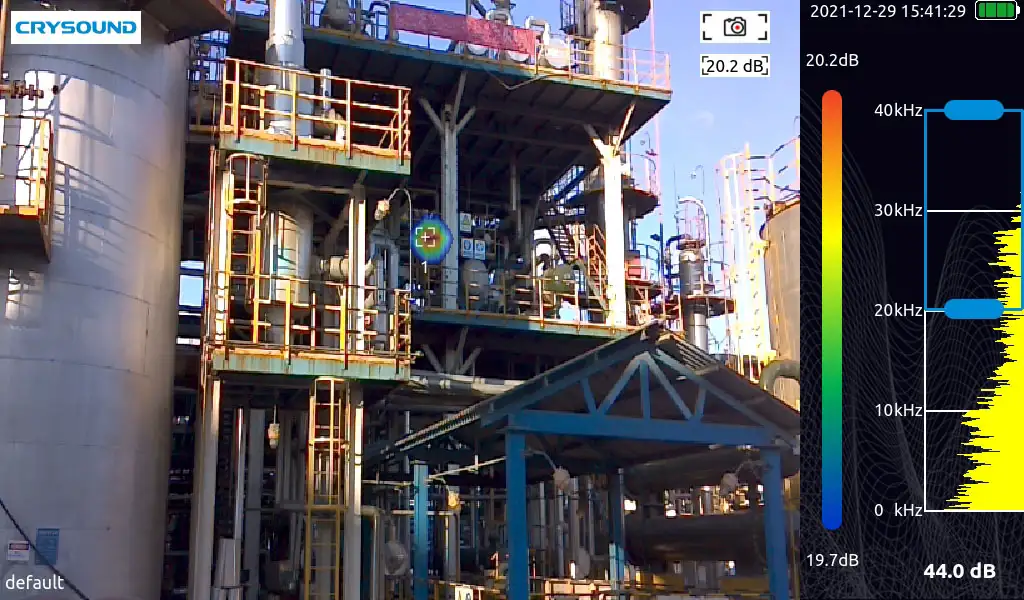
Use Case: Quickly Confirm Vacuum Leaks
As an example, a photovoltaic manufacturing company is experiencing a sudden drop in airflow within its negative pressure pipelines, which is failing to meet production requirements. Compounding the issue, there are no effective methods for detecting vacuum leaks. The exhaust ducts are both high and complex, and personnel currently assess potential leaks by physically touching the pipes, which exposes them to the risk of burns.
Improve efficiency and safety
Onsite personnel do not need to work at heights, they can use acoustic imaging devices to conduct remote leak detection from a safe distance.
No manual contact required
No manual contact required
Remote + real-time imaging
Remote + real-time imaging

Explore More Use Cases
For technicians in industrial facilities, using acoustic imaging cameras can boost safety and reduce costs. How? By quickly identifying leaks and partial discharge without “reading bubbles”. Here at CRYSOUND, we are raising the bar with our latest innovation—the CRY8120 Series Acoustic Imaging Cameras. This cutting-edge device not only transforms industrial inspections but also sets a new standard for performance and efficiency. Let’s check out the amazing capabilities, top-notch performance, and advanced features of the CRY8120, making it a must-have for industrial inspections.

Unparalleled Capabilities:
The CRY8120 acoustic imaging camera excels in various applications, including gas leak detection, electrical partial discharge identification, and mechanical deterioration monitoring. It outperforms traditional methods by providing results that are 10 times faster and more accurate. When it comes to gas leak detection, the CRY8120 swiftly pinpoints leak locations, estimates leakage volume, and potential economic losses in real-time. This capability reduces detection time, enabling faster repairs and reduced downtime. For electrical partial discharge detection, the camera displays PRPD charts in real-time, accurately identifying discharge types and aiding in informed decision-making for eff
icient maintenance and prevention of potential failures.

Best-in-Class Performance:
Equipped with 200 microphones, a 100 kHz bandwidth, and 10 times more computing power, the CRY8120 acoustic imaging camera offers unparalleled performance. Its ability to pinpoint even the smallest and most distant leaks with exceptional accuracy is a testament to its superior specifications. Unlike other acoustic camera solutions on the market, the CRY8120 can detect leaks up to 200m away. Despite these advanced features, the CRY8120 remains lightweight at just 1.4 kg, making it highly portable and suitable for deployment in various challenging industrial environments.

Enhanced Features for Convenience:
The CRY8120 acoustic imaging camera goes beyond its primary functionalities by offering a range of convenient features that enhance the user experience. Bluetooth and Wi-Fi connectivity enable wireless data transmission and quick report export, eliminating the need for cumbersome cables and saving valuable time.
Additionally, the integration of a thermal camera and contact sensors provides a comprehensive solution for diverse industrial scenarios, further extending the camera’s versatility and applicability.

Premium Display for Clear Visibility:
Featuring an impressive 8-inch display with a resolution of 1920 × 1200 pixels, the CRY8120 delivers a clear and detailed view of field conditions. The high-resolution display accurately renders leaks and other issues, magnifying every detail with its 13 million pixels and 6x digital zoom. Moreover, the display’s brightness of 600 nits ensures optimal visibility even in bright sunlight, making it suitable for outdoor inspections.

Long-Lasting Battery Life:
The CRY8120’s battery life is designed to accommodate extended inspection sessions. With a single battery, it provides up to 5 hours of continuous operation. For longer durations, an additional battery ensures uninterrupted use throughout the day. This extended battery life eliminates the need for frequent recharging, maximizing uptime and productivity.

Conclusion:
The CRY8120 acoustic imaging camera from CRYSOUND represents a groundbreaking advancement in the field of industrial inspections. Its unmatched capabilities, enhanced features, and superior performance make it an indispensable tool for inspection teams across industries. With the CRY8120, inspections become faster, more accurate, and more efficient, ensuring the safety and reliability of industrial equipment. Embrace the next generation of acoustic imaging technology and elevate your industrial inspection capabilities with the CRY8120 Series.
Fore more details, contact us by info@crysound.com
In modern industrial production, gas leaks lead to resource wastage, and pose serious threats to employee safety and the environment. One of our clients in oil and gas industry reported that traditional leak detection methods can not accurately and efficiently locate leak points. Due to the hazardous environment, there are also potential safety issue for inspection personnel. At CRYSOUND, we understand the significance of this challenge and are here to provide valuable solution.
As we know, gas leaks often occur due to factors such as aging from prolonged use, corrosion, and improper installation, typically at equipment connection points like flanges and valves. Gas leaks should not be underestimated. Periodically inspection and maintenance can ensure the safety of production, enhance corporate image and market competitiveness.
.png)
For industrial production, quickly and accurately locating gas leaks is crucial. Providing assessments of leak volume and economic losses can serve as important references for corporate decision-making.
.png)
Our client successfully identified multiple leakage points at flanges and valves in the factory by actively using a handheld acoustic imaging camera. The handheld acoustic imaging camera provided assessments of leak volume and economic losses, allowing the client to selectively repair the leak points with larger leak volumes based on the evaluation data, thereby reducing losses in the factory.
.png)
For more information or to obtain professional services, please contact us. We are dedicated to provide effective solutions!
System Devices
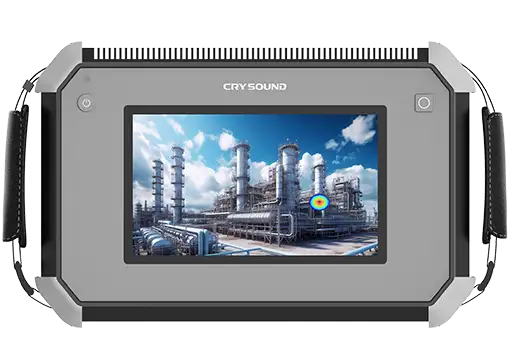
CRY2620 64-Mic Industrial Acoustic Imaging Camera
The CRY2620 Industrial Acoustic Imaging Camera is designed for ease of use and quick operation. Its robust aluminum alloy shell ensures durability, making it adaptable to complex and changing work environments. The device provides a real-time sound image display, significantly accelerating the detection of pressurized or vacuum leaks compared to traditional methods.
The CRY2620 simplifies testing with just two adjustable parameters: test frequency range and dynamic range, covering most testing needs.
It offers multiple modes, including camera and video modes, along with flexible on-site data recording. The large-capacity TF storage card is expandable, allowing for quick export and reporting of test results.
This device helps enterprises minimize losses from gas leaks and other accidents, enhancing overall operational safety.
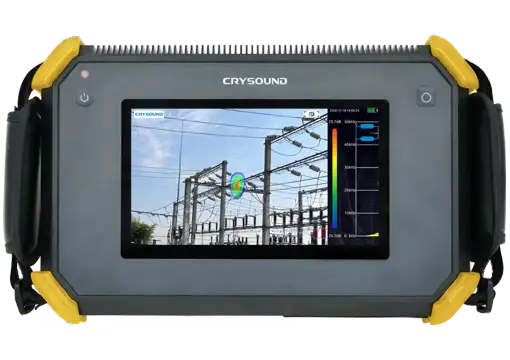
CRY2623 128-Mic Industrial Acoustic Imaging Camera
The CRY2623 is a 128-mic industrial acoustic imaging camera that is user-friendly and requires minimal training. Its durable aluminum alloy shell is built to withstand complex and variable working conditions. The device offers real-time acoustic imaging, significantly accelerating the detection of pressurized or vacuum leaks compared to traditional methods. It supports both photo and video modes for flexible on-site data recording. With an expandable large-capacity TF storage card, test results can be quickly exported and reported. The CRY2623 helps enterprises reduce safety risks and minimize economic losses associated with gas leaks, partial discharges, and other malfunctions.
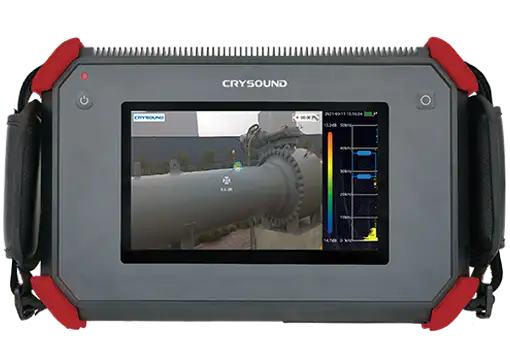
CRY2624 128-Mic Industrial Acoustic Imaging Camera (ATEX)
The CRY2624 is a 128-mic industrial acoustic imaging camera and is designed for use in explosive environments within the chemical and energy industries. Featuring a robust aluminum alloy shell, this device is built to withstand complex and dynamic work conditions. It offers real-time sound image display, significantly improving the speed of detecting pressurized or vacuum leaks compared to other methods.
The CRY2624 is ATEX certified with a rating of II 3G Ex ic IIC T5 Gc, ensuring safe operation in potentially explosive atmospheres while adhering to stringent safety standards. The device supports camera and video modes, providing flexible on-site data recording. With an expandable large-capacity TF storage card, test results can be quickly exported and reported. This camera helps industrial facilities minimize losses from gas leaks, partial discharge, and other accidents, enhancing overall safety and operational efficiency.
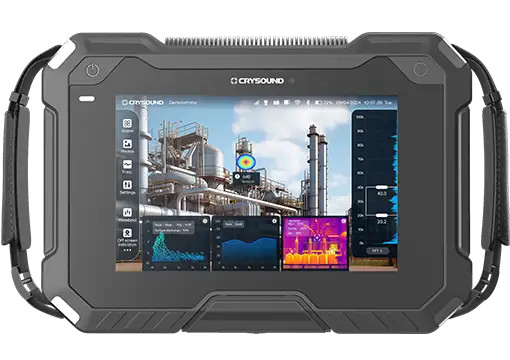
CRY8124 Advanced Acoustic Imaging Camera
Introducing CRYSOUND’s cutting-edge acoustic imaging camera, revolutionizing industrial inspections with advanced capabilities. The CRY8124 acoustic imaging camera excels at pinpointing leaks, identifying electrical partial discharge, and detecting mechanical deterioration. Setting a new standard for sensitivity and efficiency, the CRY8124 boasts 200 microphones (the most in the industry). The device detects smaller leaks and partial discharges from greater distance than any other handheld acoustic imaging camera on the market.
The CRY8124 reporting software allows offline analysis, editing, and report generation, simplifying regular maintenance routines.
Elevate the effectiveness of your industrial inspections with CRYSOUND’s acoustic cameras.
Get in touch
Are you seeking more information about CRYSOUND’s solutions or need a demo? Contact us via the form bleow and one of our sales or support engineers will connect with you.


